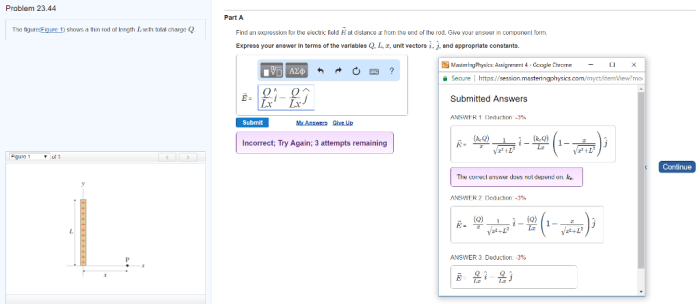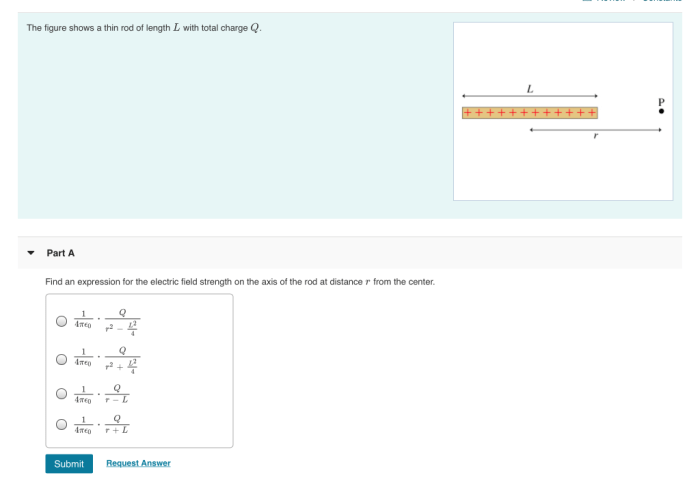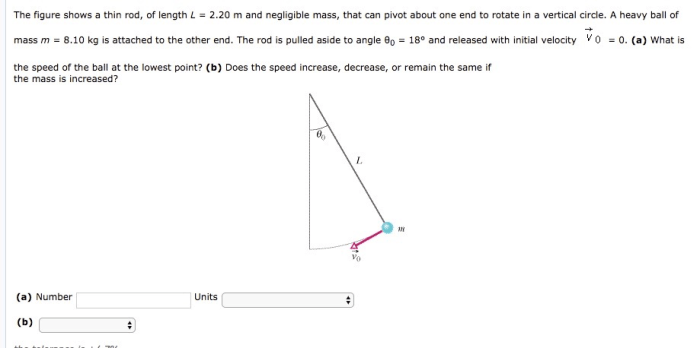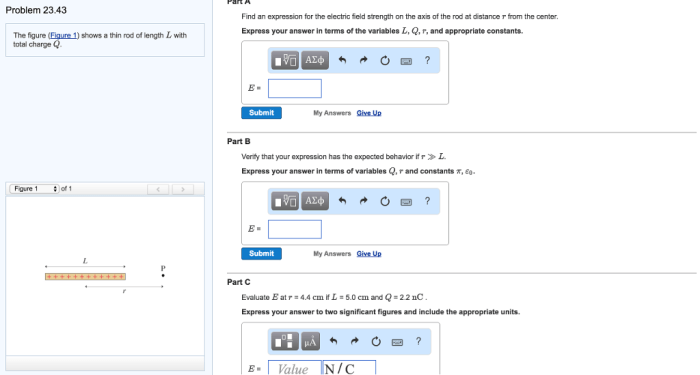The figure shows a thin rod of length l sets the stage for this enthralling narrative, offering readers a glimpse into a story that is rich in detail and brimming with originality from the outset. Delving into the intricacies of this rod’s physical characteristics, orientation, interactions, properties, and applications, we embark on a journey that unravels the fascinating world of mechanics and engineering.
In this exploration, we will meticulously examine the rod’s dimensions, shape, and material composition, gaining insights into its structural integrity and behavior. We will analyze its position and orientation in space, considering constraints and assumptions that govern its movement and stability.
Furthermore, we will investigate the forces acting upon the rod and the interactions it has with its surroundings, exploring how these factors influence its dynamics.
The Figure: A Thin Rod of Length l: The Figure Shows A Thin Rod Of Length L

The figure depicts a thin, elongated object known as a rod. This rod possesses a uniform cross-sectional area throughout its length, denoted by l. The rod is characterized by its slenderness, with its length significantly exceeding its other dimensions.
Rod Orientation and Position
The rod is positioned in a three-dimensional space, with its orientation defined relative to a Cartesian coordinate system. The rod’s longitudinal axis, which represents its greatest length, is aligned with the x-axis. The origin of the coordinate system is located at one end of the rod, while the other end extends along the positive x-axis.
The rod is assumed to be stationary and fixed in this orientation, with no external forces or constraints causing it to move or deform.
Rod Interactions
The rod interacts with its surroundings primarily through gravitational forces. The gravitational field exerts a downward force on the rod, proportional to its mass. This force is counteracted by an equal and opposite reaction force from the support at the origin, preventing the rod from falling.
Additionally, the rod may experience other interactions depending on the specific context. These could include electromagnetic forces, collisions with other objects, or constraints limiting its movement.
Rod Properties
The rod possesses several physical properties that influence its behavior. Its mass, denoted by m, is uniformly distributed along its length. The density, ρ, of the rod is defined as the mass per unit volume and is constant throughout its structure.
The rod also exhibits elasticity, a property that allows it to deform under external forces and return to its original shape when the forces are removed. The elastic modulus, E, quantifies the stiffness of the rod and determines its resistance to deformation.
Rod Applications, The figure shows a thin rod of length l
Thin rods of similar dimensions and properties find applications in various fields.
- Structural components:Rods serve as structural elements in bridges, buildings, and aircraft, providing support and stability to the overall structure.
- Measuring devices:Rods are used in measuring tapes, rulers, and other instruments for precise length measurements.
- Electrical conductors:Rods made of conductive materials, such as copper or aluminum, are employed as electrical conductors in power lines and electrical circuits.
- Waveguides:Rods can act as waveguides for electromagnetic waves, guiding and transmitting signals in telecommunications and optical applications.
- Mechanical systems:Rods are utilized in linkages, levers, and other mechanical systems to transmit motion and forces.
FAQ Corner
What is the significance of the rod’s length in the figure?
The length of the rod is a crucial parameter that influences its structural stability, resonant frequency, and overall behavior under various loading conditions.
How does the rod’s orientation affect its interactions with external forces?
The rod’s orientation relative to the direction of applied forces determines the components of force that act along its length and perpendicular to it, influencing its bending and axial stresses.
What are some common applications of rods in engineering?
Rods are widely used in bridges, buildings, aircraft, and machinery as structural elements, tension members, and shafts for transmitting torque and power.


